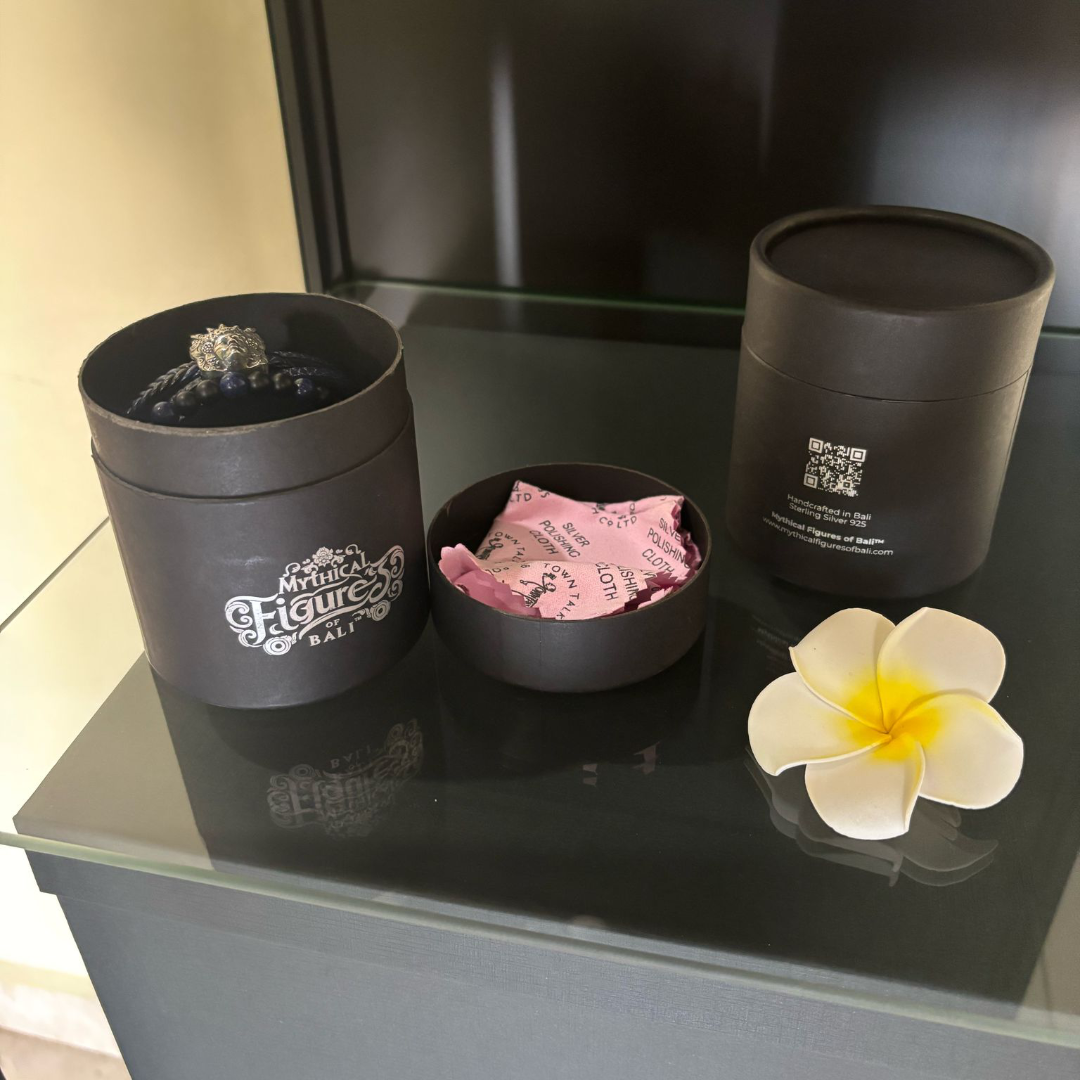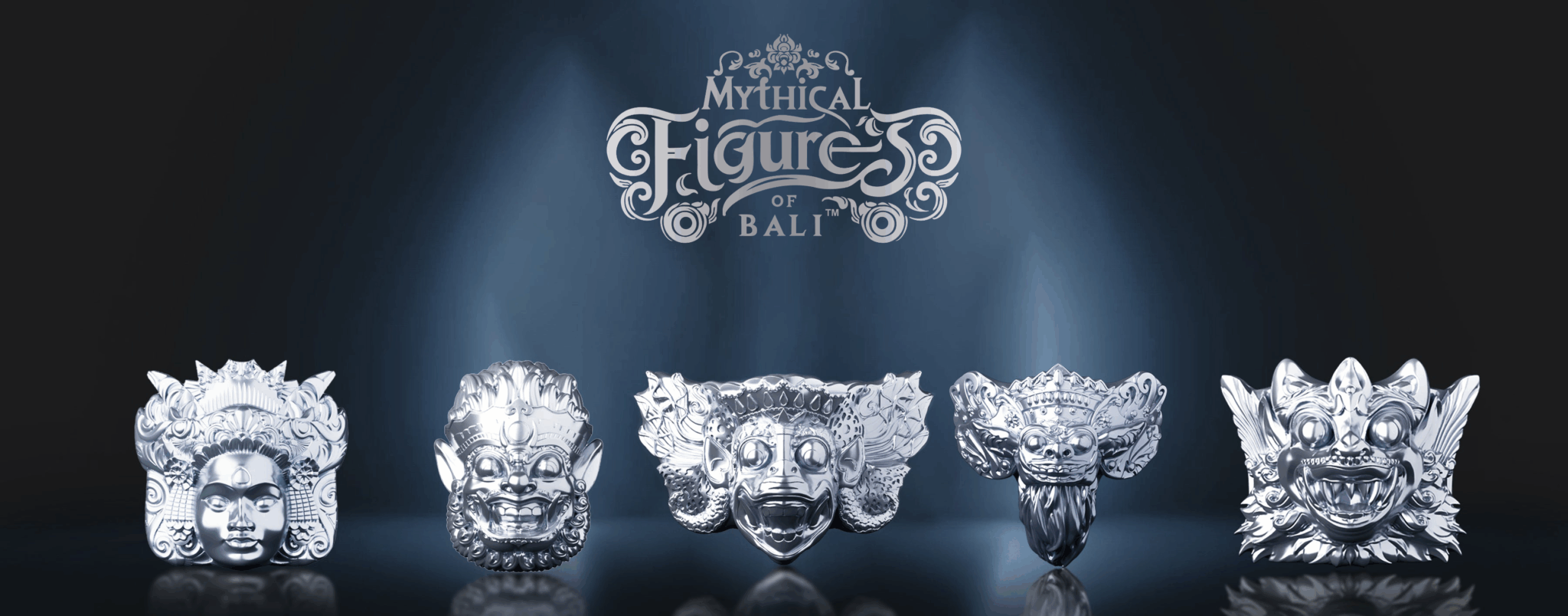
Mythical Figures of Bali™
Five Balinese protectors — reborn in silver as bracelets and pendants.
Each figure in the Mythical Figures of Bali™ collection is inspired by sacred Balinese mythology — guardians, deities, and spirits symbolizing protection, courage, and harmony.
Their journey begins in 3D, sculpted digitally and printed in wax, then cast in silver by master artisans in Celuk — the heart of Bali’s silversmith tradition. What starts on screen becomes wearable mythology through human hands and molten silver.

The Five Figures — Reimagined as Bracelets
Handcrafted in silver and mounted on deep-blue recycled leather, each design reflects the soul of its Balinese guardian.
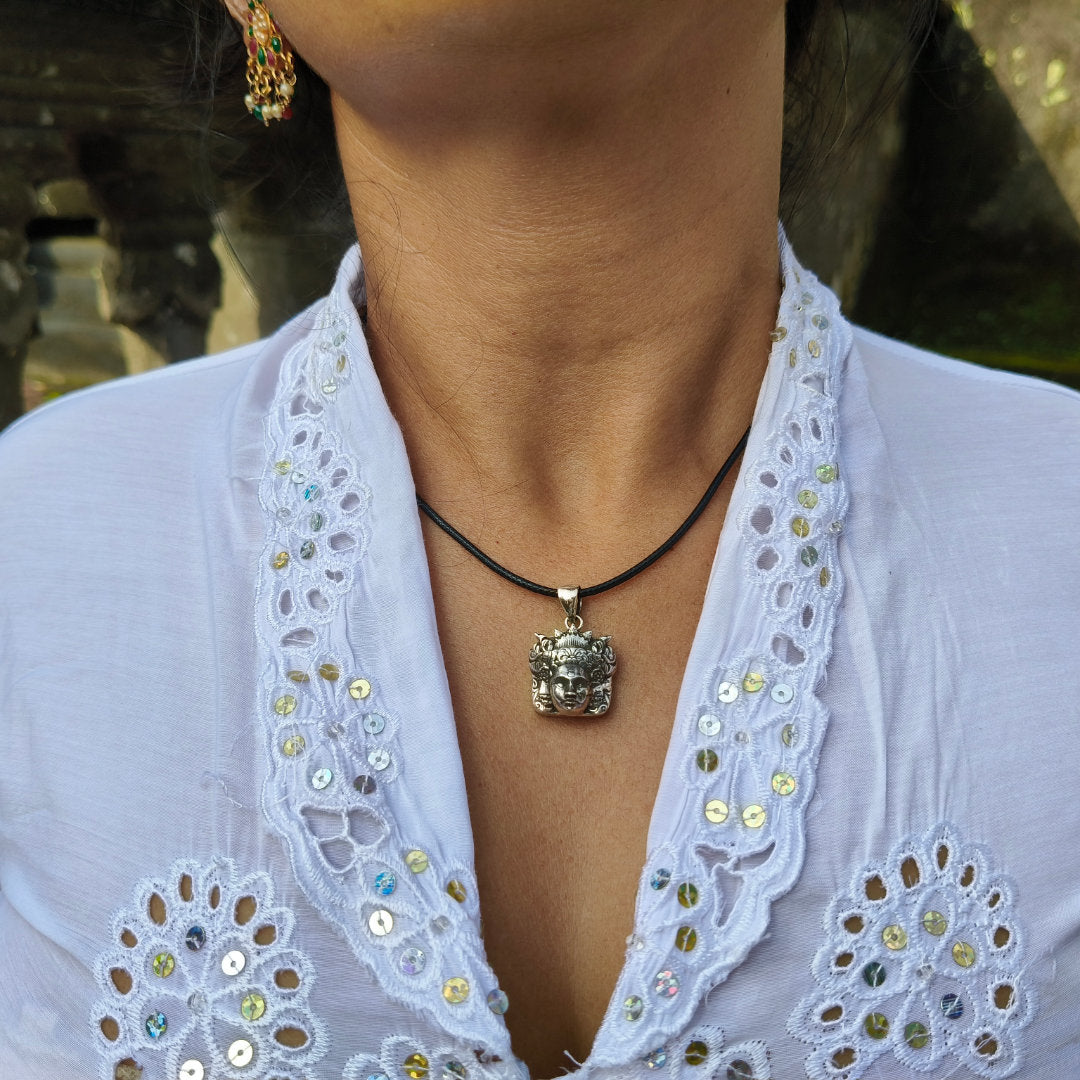
Dewi Sri – The Goddess of Prosperity
Symbol of fertility and abundance, Dewi Sri blesses the harvest and nourishes life itself. She reminds us that patience and gratitude bring growth in all forms.
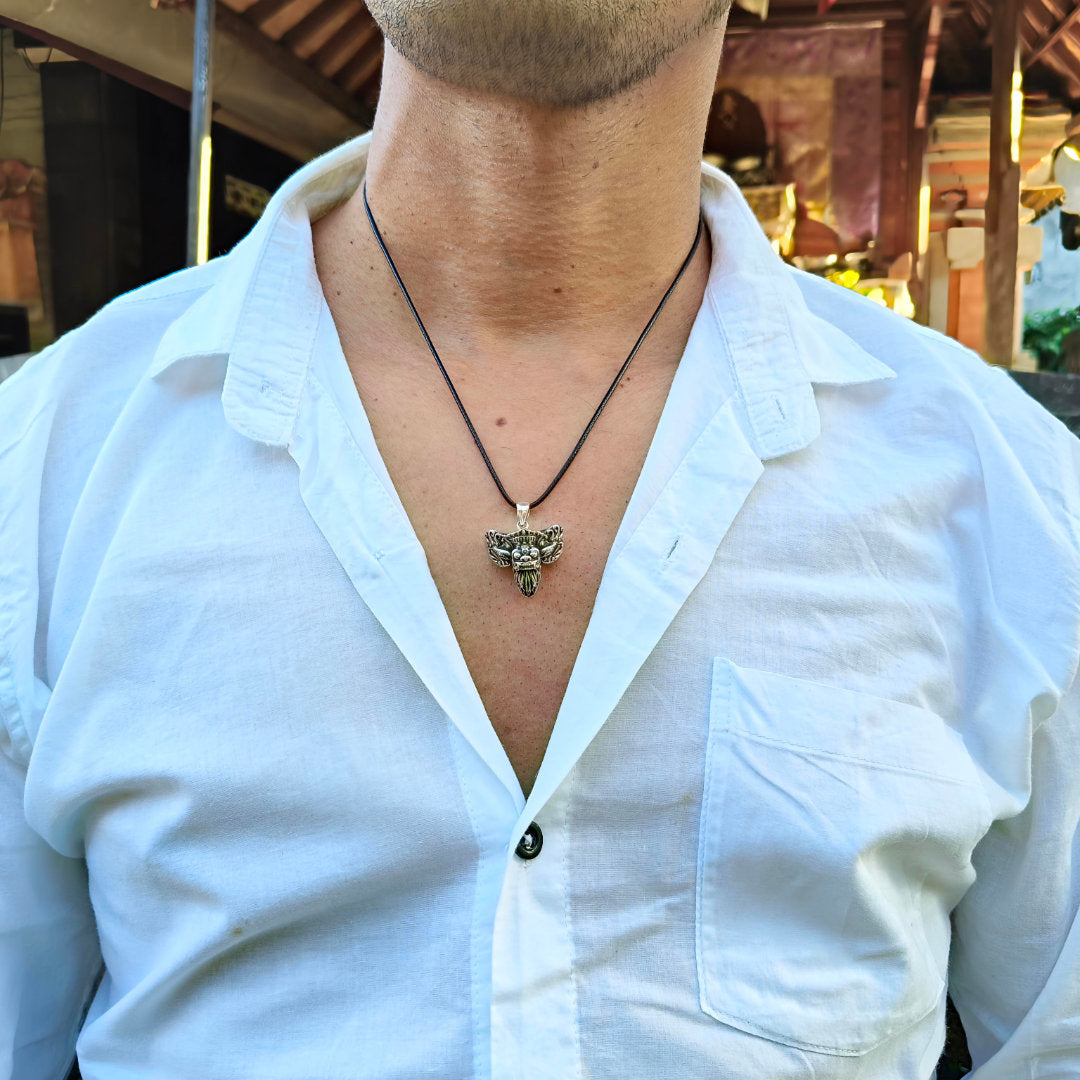
Barong - The Guardian of Light
Symbol of protection and courage, Barong stands for balance and harmony, guarding Bali’s people from evil spirits.
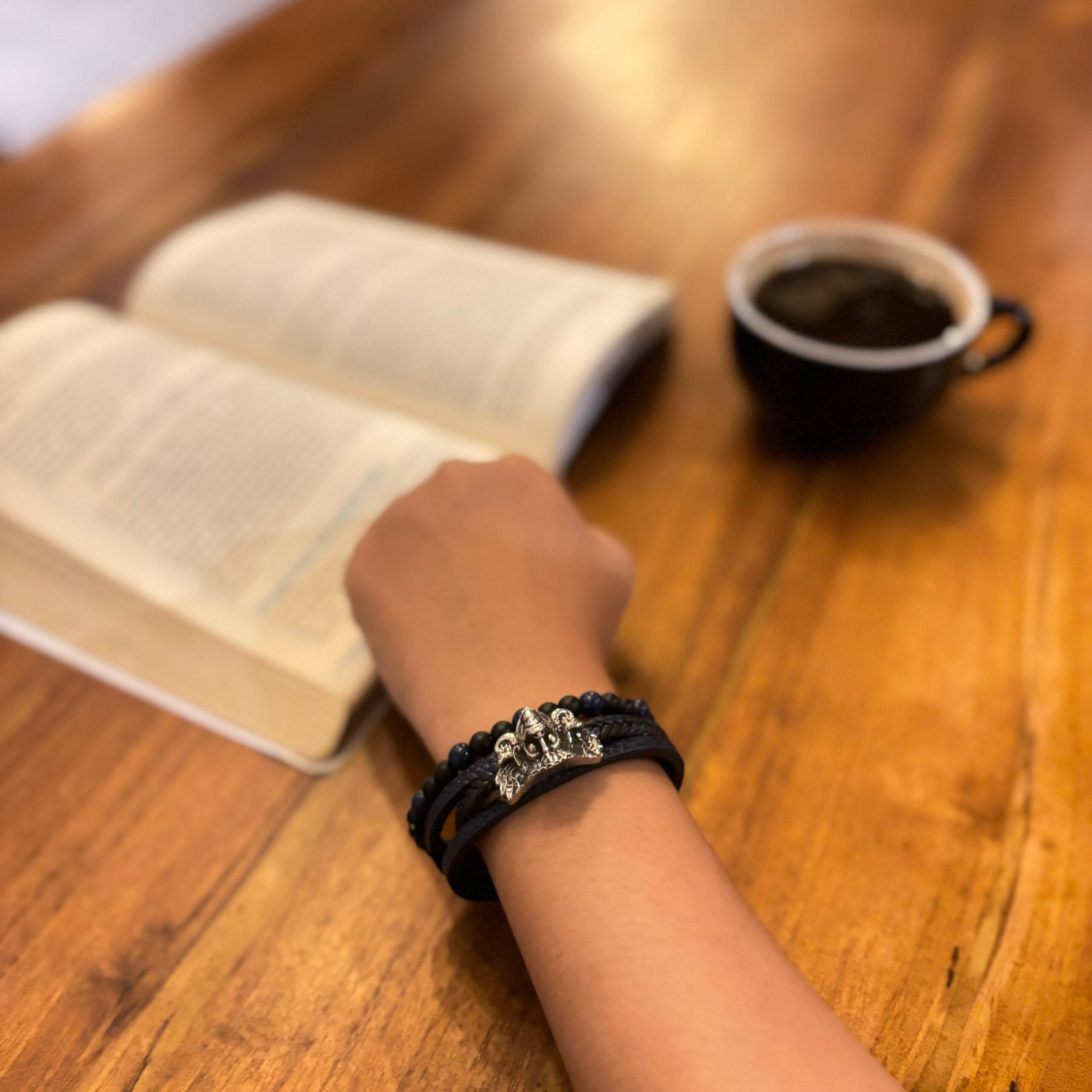
Hanoman – The Divine Warrior
Known from the Ramayana epic, Hanoman stands for strength, loyalty, and purity of heart. His courage protects truth and justice against all odds.

Lion – The Spirit of Bravery
The lion embodies courage and leadership — fierce yet noble. In Balinese symbolism, it guards the soul from fear and uncertainty.
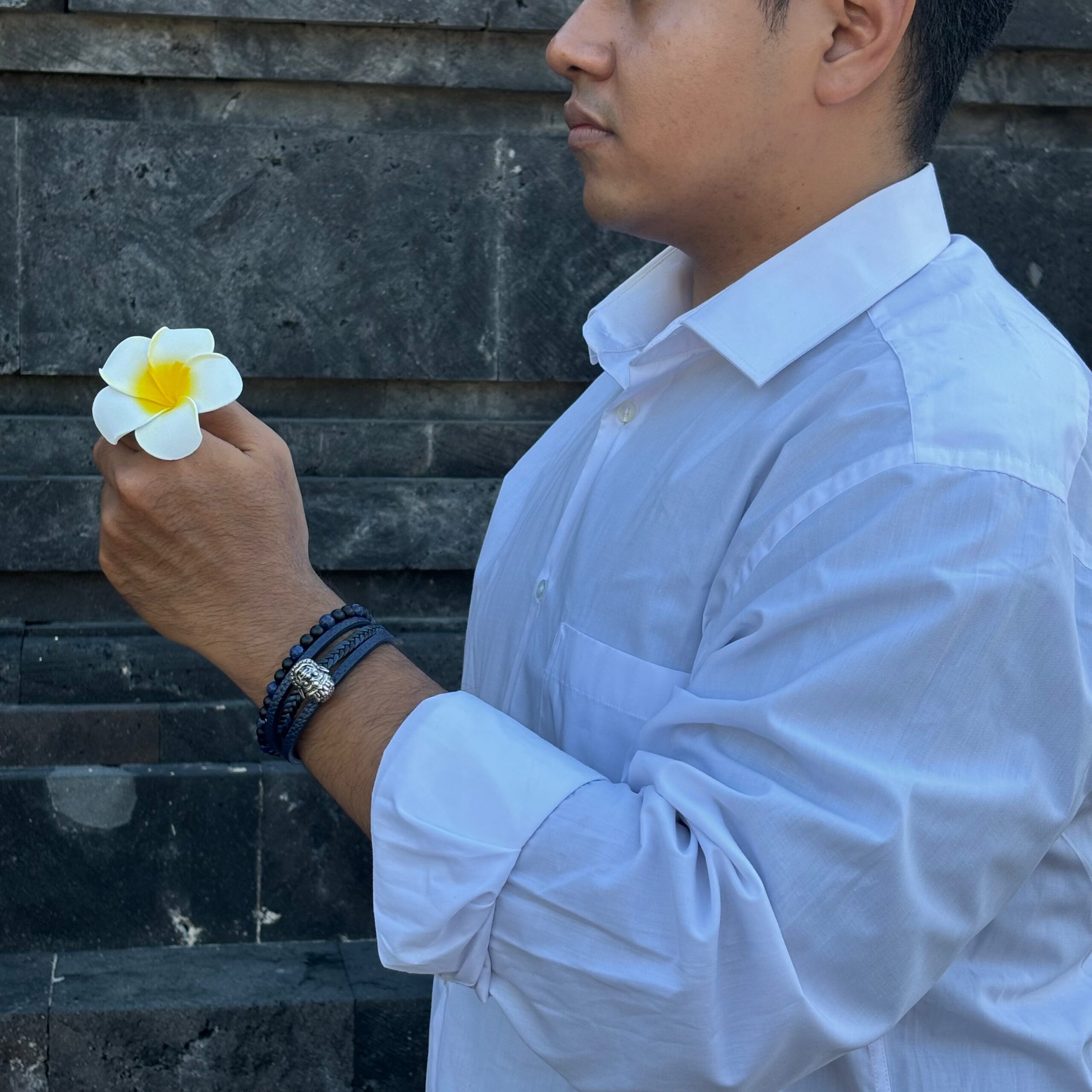
Dwarapala – The Temple Guardian
Posted at temple gates across Bali, Dwarapala defends the sacred from negativity. His presence invites strength, discipline, and spiritual awareness.

Barong – The Protector of Balance
Barong represents the eternal harmony between good and evil — a reminder that light cannot exist without shadow.
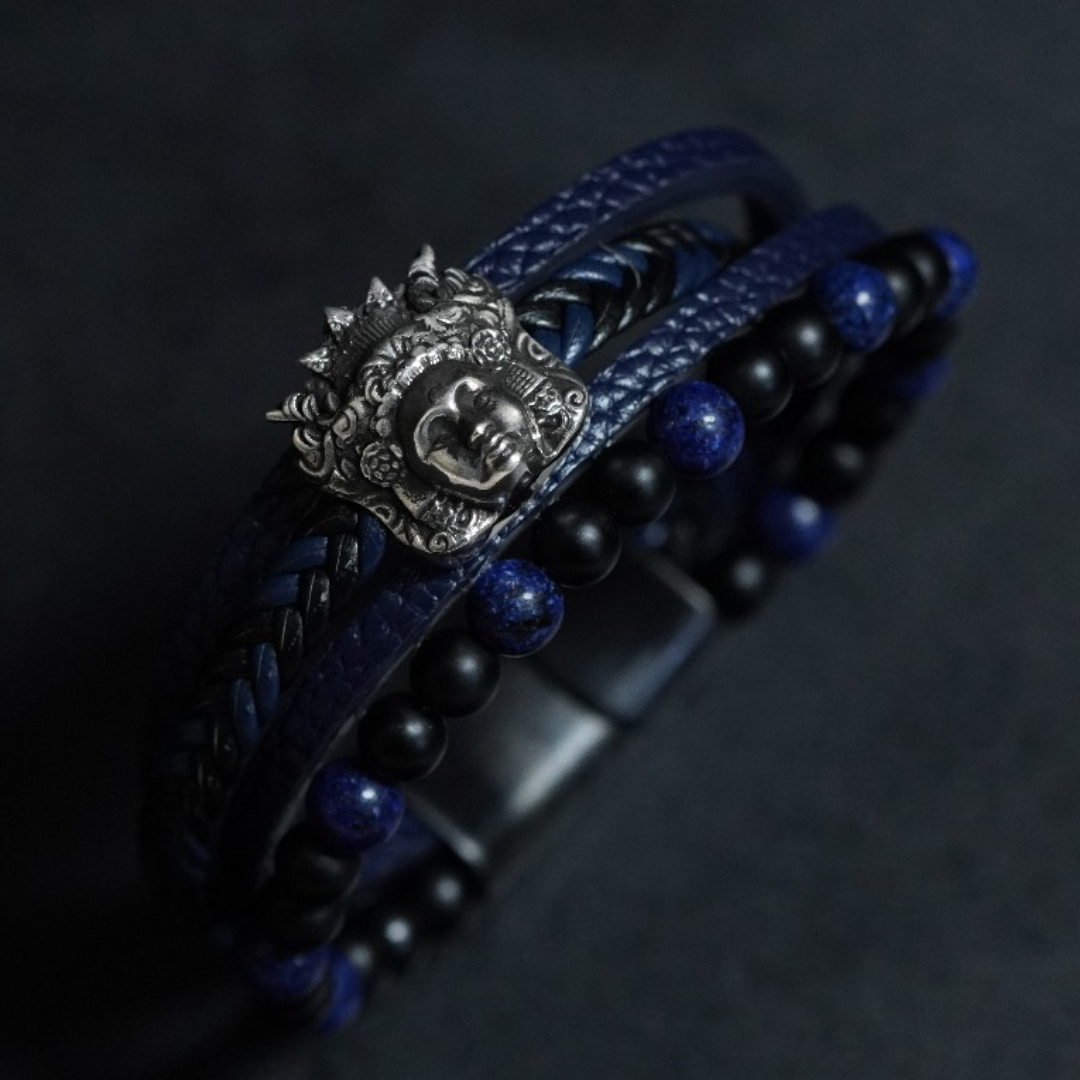
Dewi Sri – The Spirit of the Harvest
Worshipped in rice fields and homes, Dewi Sri unites land, water, and sky. Her spirit lives in every grain that sustains Bali’s people.
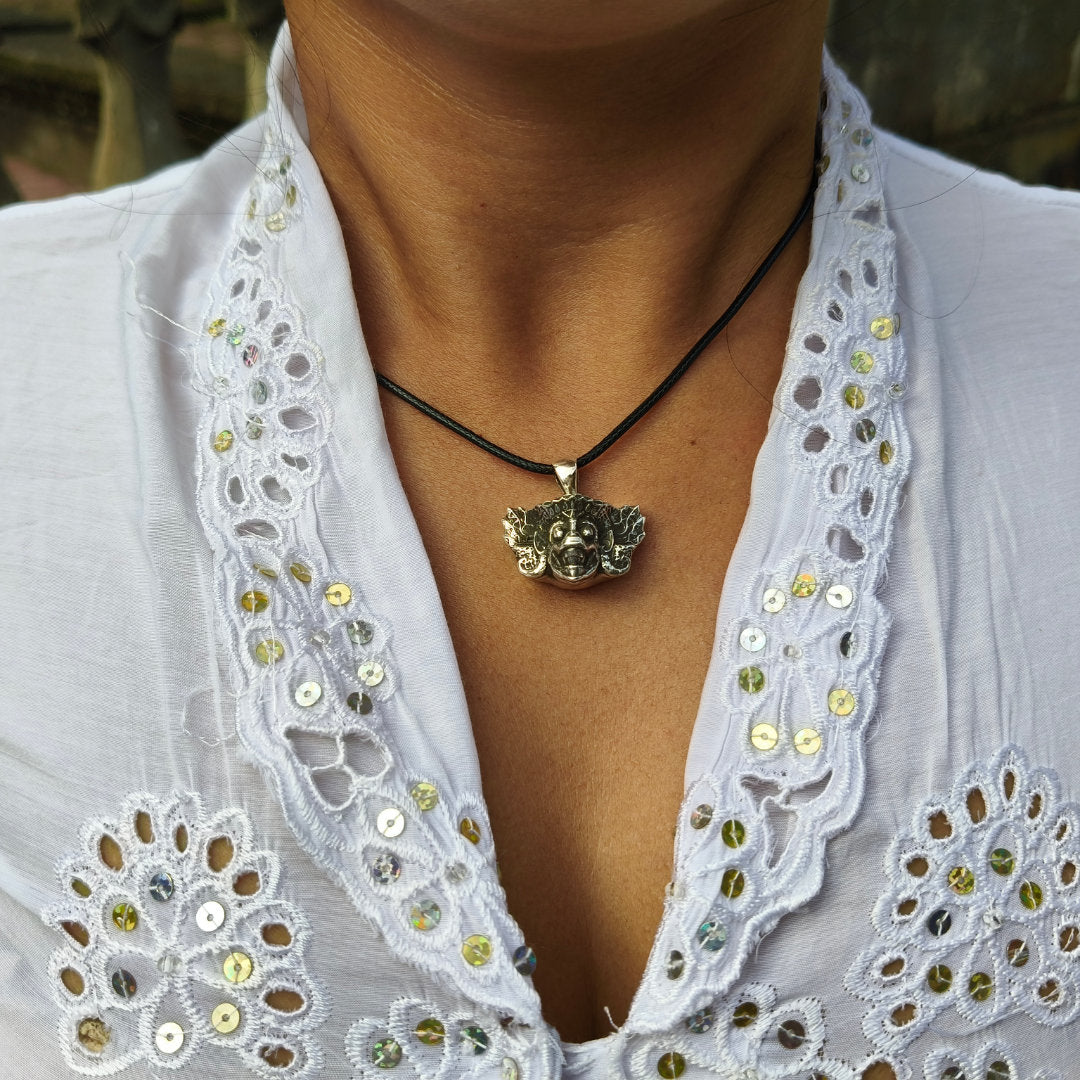
Hanoman – The White Monkey of Courage
Agile and fearless, Hanoman symbolizes the power of faith in motion. His devotion teaches that strength flows from humility.

Dwarapala – Keeper of the Sacred Gate
With fierce eyes and a steady stance, Dwarapala stands guard where the material meets the divine — a timeless protector of thresholds.
Craftsmanship — From Idea to Silver
The Complete Lost-Wax Silver Casting Process
These twelve short clips reveal the entire creation process of the Mythical Figures of Bali™ — from 3D modeling and wax injection to silver casting, polishing, and final assembly.
Filmed in Celuk, Bali’s legendary silversmith village, this series is the first to show every stage of the modern lost-wax silver craftsmanship that defines the collection.
1. Research & Hand Sketches
Every figure begins with field research and pencil sketches. Inspired by temple carvings, offerings, and guardian iconography, each character is first observed, studied, and distilled into clear silhouettes.
These hand-drawn studies define the symbolic shapes and proportions before any digital 3D modeling begins.
From pencil sketch to pixels, the Lion is the first Mythical Figure to be digitally sculpted. Using advanced 3D modeling software, every line and curve is shaped with precision — capturing the Lion’s strength, symmetry, and noble expression.
This virtual sculpt becomes the digital blueprint for 3D printing, where art and technology merge before the first drop of silver is ever cast. into the physical world.
The Lion’s digital design was printed in wax at Materialise in Leuven, Belgium— one of the world’s pioneers in high-definition 3D printing.
Because wax is too fragile to transport, the prints were cast in brass to preserve every fine detail before being shipped to Bali.
The video shown here illustrates a similar 3D wax printing process, as filming was not possible during the actual production of our figures.
These brass masters became the foundation for creating the silicone molds used later in the casting process. before the first drop of silver is ever cast. into the physical world.
First, the brass model is surrounded by liquid silicone, which is left to harden into a flexible block that captures every contour of the design.
This block is then placed into a pressing machine, where pressure and heat compact the silicone evenly around the model.
After cooling, the mold is cut open and split in two, revealing a perfect negative imprint of the original figure — ready for wax injection in the next step.
Once the silicone mold is complete, it’s reassembled and filled with melted wax.
A special injection machine forces the warm wax into every fine cavity, capturing even the smallest textures of the original design.
When the wax cools and solidifies, it is removed from the mold — a perfect replica of the figure, ready for the next stage of the casting process.
Each wax figure — front and back, ten in total — is carefully inspected before assembly.
Any small imperfections, seams, or air bubbles are removed with fine tools to ensure a flawless surface.
Once cleaned, the figures are attached to a central wax stem, forming the wax tree that will be used for casting.
This meticulous step ensures that the molten silver will flow smoothly through every branch, bringing each figure to life in metal.
The completed wax tree is secured inside a metal casting cylinder, and a fine, heat-resistant plaster is carefully mixed to the right consistency.
Before pouring, the plaster mixture is placed inside a vacuum machine to remove air bubbles that could damage the mold.
Once poured, the filled cylinder is vacuumed again, ensuring that the plaster flows perfectly around every figure and captures even the smallest details.
After hardening, the cylinder will be placed in a kiln to burn out the wax, leaving a hollow cavity ready for molten silver.
After the plaster has fully hardened, the cylinder is placed into a high-temperature kiln.
Over several hours, the wax melts and burns away completely, leaving precise hollow spaces inside the mold — perfect negatives of each figure.
This critical stage, known as the lost-wax process, must happen before casting: if molten silver were poured while the wax was still inside, the vaporized wax would cause bubbles, cracks, and distortions.
By the end of this stage, only a clean, heat-resistant mold remains — ready to receive the silver.
The process begins by melting pure 925 sterling silver inside a crucible until it becomes a glowing, liquid metal.
Once the silver reaches casting temperature, it is carefully poured into the preheated cylinder inside the casting oven.
The molten silver flows into every cavity left by the melted wax, capturing the exact form and detail of each figure.
In this stage, fire and precision merge — transforming the Mythical Figures of Bali™ from digital concept to living silver.
After casting, the cylinder containing the molten silver is left to cool briefly before being immersed in cold water.
As the hot plaster meets the water, steam bursts upward and the solidified silver tree is revealed inside.
This sudden cooling not only removes the plaster but also hardens the silver, marking the first moment the figures appear in their true metal form.
With the plaster removed, each silver figure is carefully cleaned and polished by hand.
Artisans use small files, rotary tools, and brushes to remove casting marks and smooth every surface without losing the fine details of the design.
During this stage, the raw metal begins to shine — revealing the craftsmanship and precision that define the Mythical Figures of Bali™ collection.
In the final stage, each silver figure receives its engraved mark of authenticity — the Mythical Figures of Bali™ logo, the ™ symbol that protects its identity, and the international 925 sterling silver hallmark. The engraving is executed with a high-precision laser, ensuring perfect alignment and consistency across every piece. After engraving, the figures are assembled by hand onto recycled leather bracelets or pendant fittings, completing their transformation from myth to wearable art. Each finished creation embodies the spirit of Bali — designed in Ubud, crafted in Celuk, and carrying the authenticity of the Mythical Figures of Bali™ name.
What Makes This Process Unique
A contemporary dialogue between digital precision and Balinese lost-wax craftsmanship.
Very few visitors to Bali realize how much work goes into traditional silver casting. The process you’ve just seen is not common — it’s the first time that 3D design and 3D printing have been combined with Balinese lost-wax casting, a fusion that creates a level of precision impossible to achieve by hand alone.
I am Jean-Pierre Bobbaers, a Belgian designer who has spent a lifetime moving between digital and physical worlds — between concept and craft. Through Mythical Figures of Bali™, I wanted to give form to memory: to use modern design tools not to replace tradition, but to preserve it.
What began as drawings in Ubud has become a dialogue between technology and ritual — a small tribute to the artistry of Celuk and to Bali itself.
The Designer — Jean-Pierre Bobbaers
The Belgian Designer Who Transforms Stories into Objects of Memory
Behind every stage — from research sketches to molten silver — stands a designer who saw in Bali not just beauty, but meaning. I am Jean-Pierre Bobbaers, the creator of Mythical Figures of Bali™. For decades I’ve worked across interior, retail, and industrial design through my Brussels- and Bali-based agency IMAGINIF, exploring the space where technology and craftsmanship meet.
But Mythical Figures of Bali™ is different. It isn’t fashion, nor commercial design. It is a return to meaning — to memory — to the idea that an object can carry the soul of a place. The collection was born from my fascination with Balinese mythology and symbolism, from the moment I first arrived in Ubud in 2016. Figures like Barong, Hanoman, Dewi Sri, Dwarapala, and the Lion spoke to me as values: protection, courage, fertility, and balance.
I wanted to preserve those values through design — by merging 3D modeling and 3D printing with Celuk’s ancestral silver casting. Local artisans told me this fusion hadn’t been done before in Bali: digital precision meeting ancient ritual, achieving detail no hand alone could create.
“What began as sketches has become a dialogue between worlds: modern tools shaping ancient stories, turned into silver by the people of Celuk.”

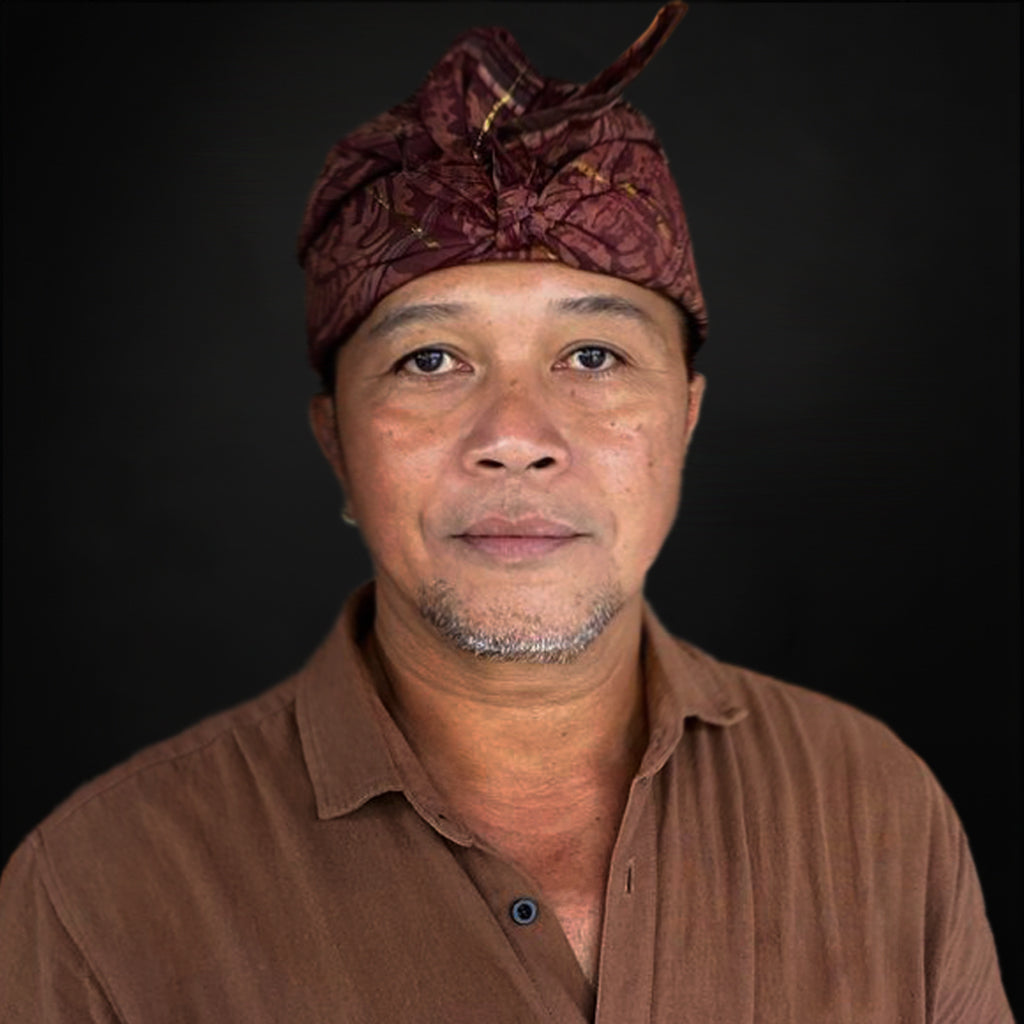
Eddy Santana is the craftsman who brings legends to life. The son of a Celuk silversmith, he grew up among fire, wax, and silver. With 20 years of experience, he became the quiet orchestrator behind every piece — guiding casting, polishing, and final assembly across a trusted network of artisans in his village.
Where my designs begin in the digital world, Eddy ensures they find their true form in silver, with the same care and respect Celuk has practiced for generations. Each finished piece bears the Mythical Figures of Bali™ logo, the ™ mark of authenticity, and the international 925 hallmark — but its real signature lies in collaboration: between innovation and heritage, between designer and craftsman, between vision and hand.
Presentation & Exclusive Availability
Each Mythical Figures of Bali™ bracelet is carefully presented in a custom-designed black cylindrical tube, complete with silver-cleaning cloth and a discreet QR code that leads directly to the story behind every guardian.
The packaging reflects the same attention to detail as the jewelry itself — minimal, tactile, and rooted in respect for craft and story. It’s not just a container, but part of the experience.
These pieces are not sold online. They are available only through selected luxury venues in Bali and during exclusive events such as seminars, congresses, and curated presentations where craftsmanship and storytelling meet.
